Dead Sea, Ein Bokek#
Photos by Dmitry Moiseenko and
Ivan Roslyakov
members of the AirPano Team that is a member of the global-geography Consortium.
28 August 2019
with kind permission of AirPano
Dead Sea, Ein Bokek, Israel
In the world, there are around 80 seas connected to the ocean, and several endorheic basins that are traditionally called "seas". And among them, there is one of the most famous seas bearing a rather sinister name, the Dead Sea. Its shores and surface are 430.5 metres below sea level, being the Earth's lowest elevation on land.
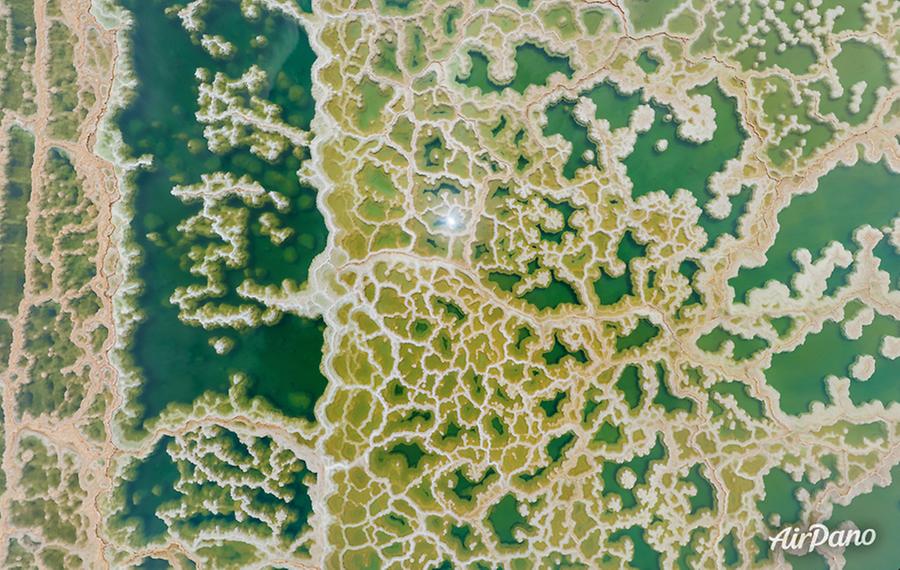
© AirPano
The name the Dead Sea is rather young. It has settled in Russian, English and other languages, but the Hebrew name for it is the Sea of Salt. The Greeks called it Lake Asphaltites, and, in the Bible, it is mentioned as the Eastern Sea.
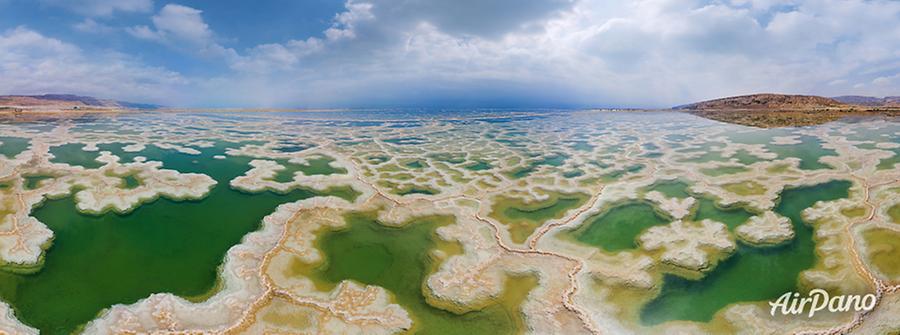
© AirPano
It has become a "sea" because of its giant sizes: its surface is around 810 km2, maximum depth is 298 m, the water volume once was 325 km3. Unfortunately, nowadays it has declined to 147 km3 with a surface of 605 km2. For the previous century, the water level had dropped by 25 m, and this destructive process goes on.
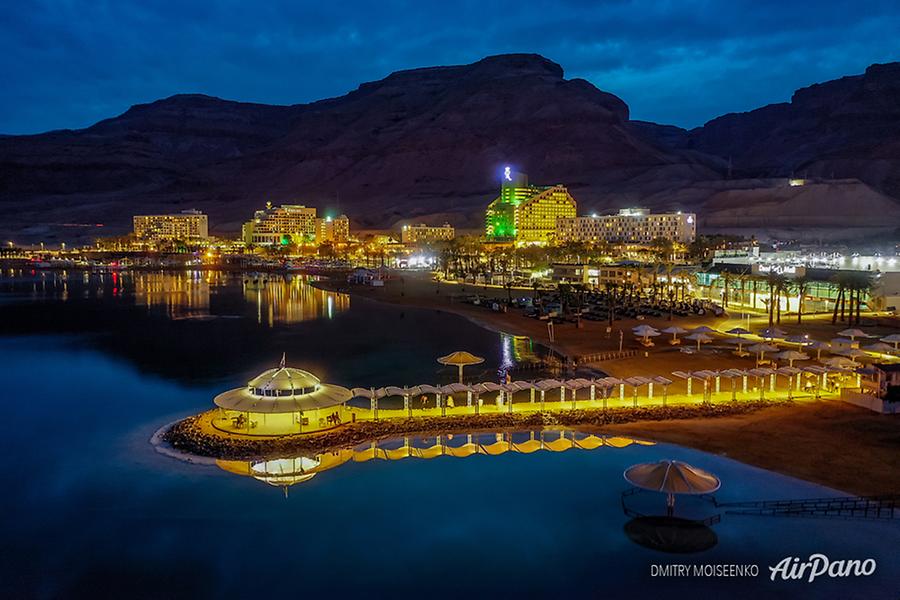
© AirPano
Only the "gloominess" of the sea has stayed unchanged: the concentration of salt is so high that almost no living organism can survive here. With a salinity of 342 g/kg or 34.2%, it is 9.6 times as salty as the ocean. But in fact, the sea can't be called totally lifeless: with the development of the technologies, scientists have discovered the presence of certain bacteria and microbial fungi. But indeed, neither dolphins nor different fish and marine species can survive in such conditions.
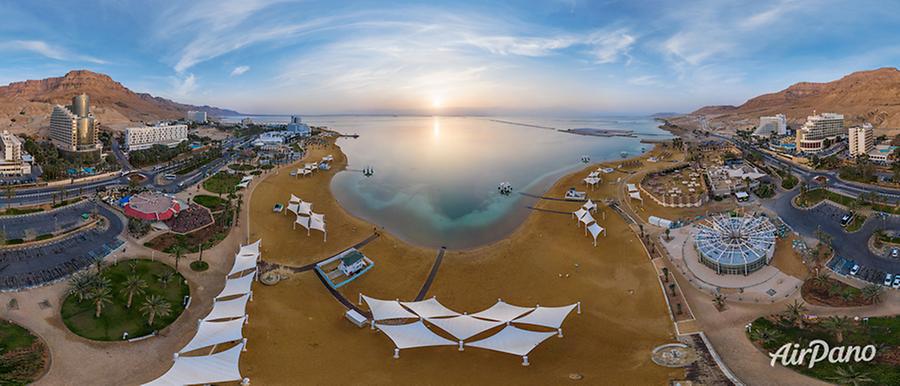
© AirPano
Salty water is rather dense: it is hard to sink here as the body is always pulled up to the surface. Another unique feature of the Dead Sea is its chemical compound. There are many other salt lakes in the world, but this one is exceptionally rich with mineral substances. The waters of the Dead Sea contains a great amount of chloride, potassium, calcium, sodium, magnesium and different microelements with health properties.

© AirPano
The Sea is fed by the Jordan River, freshwater springs and mountain flows that contain salty mud. These substances cover the shores and people have long noticed their rejuvenating and healing effect. The Roman gladiators are believed to have healed their wounds with the mud of the Dead Sea.
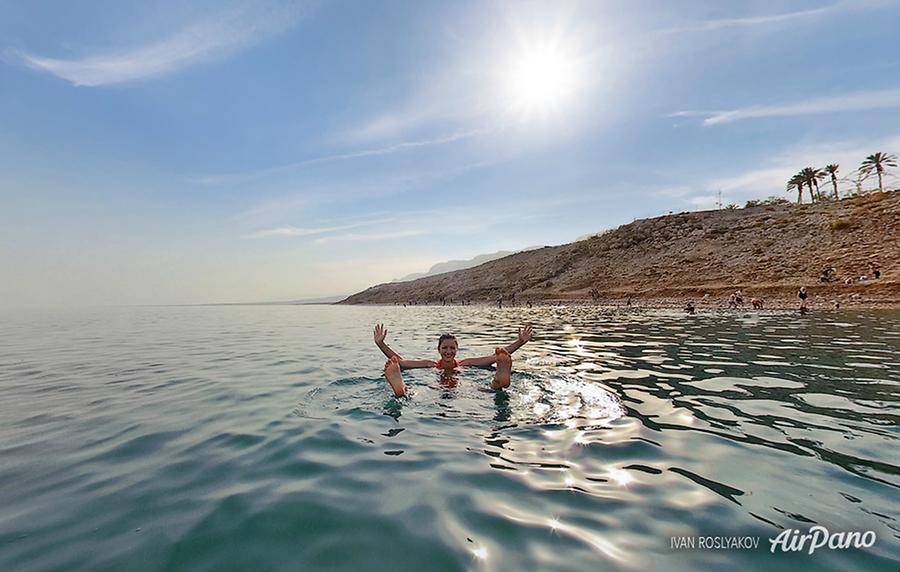
© AirPano
Nowadays the area of the Sea is divided between Israel and Jordan. Numerous resorts function here and welcome people coming from all over the world for rehabilitation and unusual swimming. Close to Ein Gedi Nature Reserve, there is one of the most famous resorts called Ein Bokek.
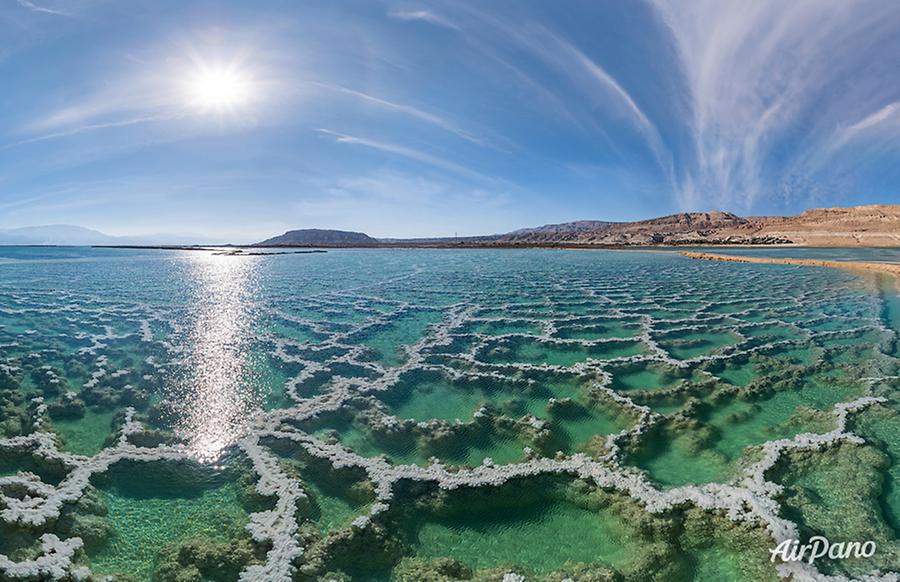
© AirPano
Ein Bokek holds one of the world's records. It is the lowest settlement on the planet with an altitude of 420 below sea level! Comfortable hotels, sandy beaches and fantastic views will touch even the most insensible tourist. AirPano strongly recommends visiting this remarkable resort while we will show you its beauty in our 360° panoramas.
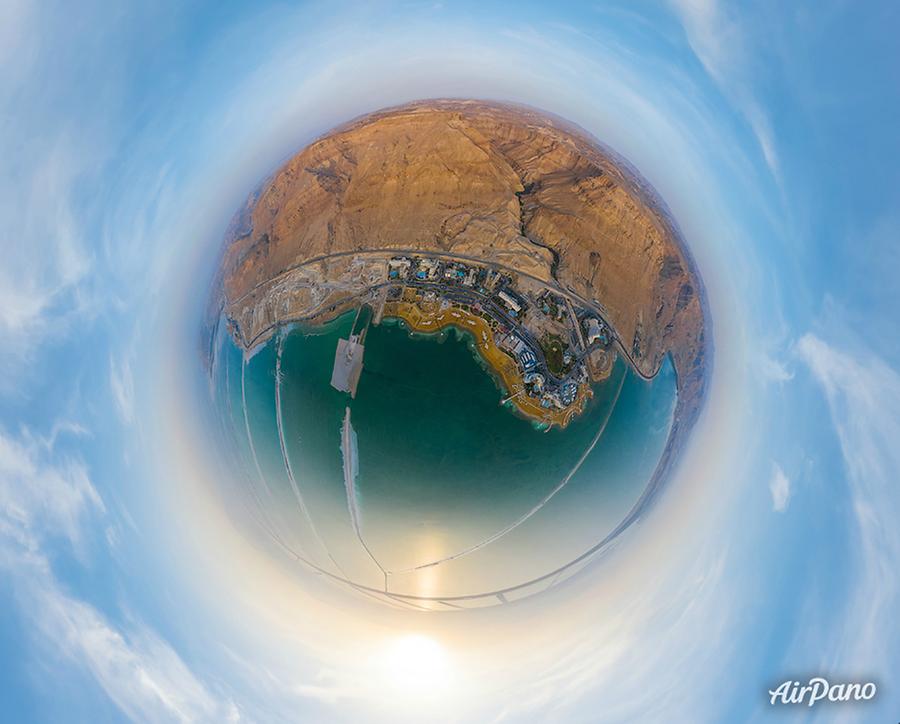
© AirPano